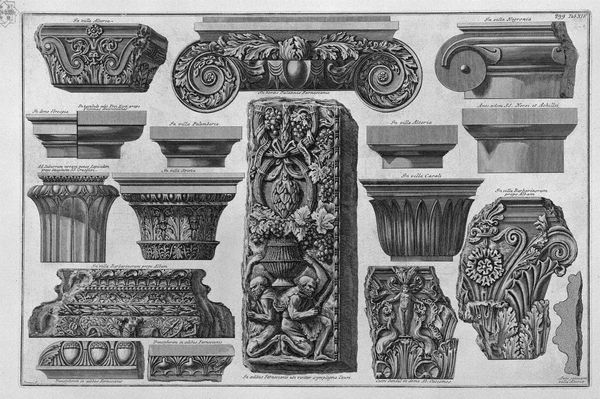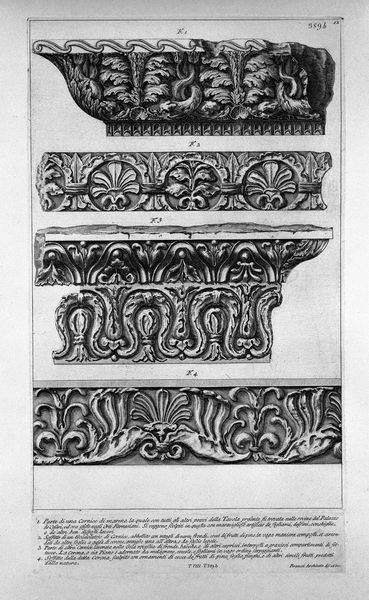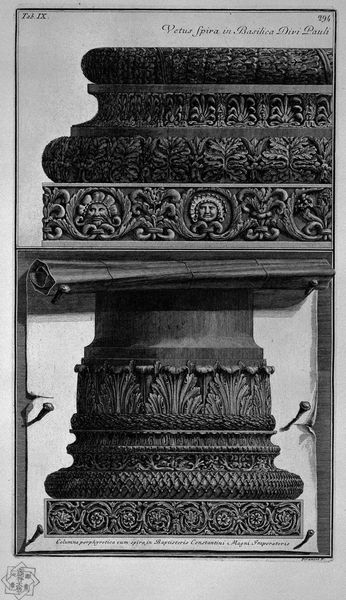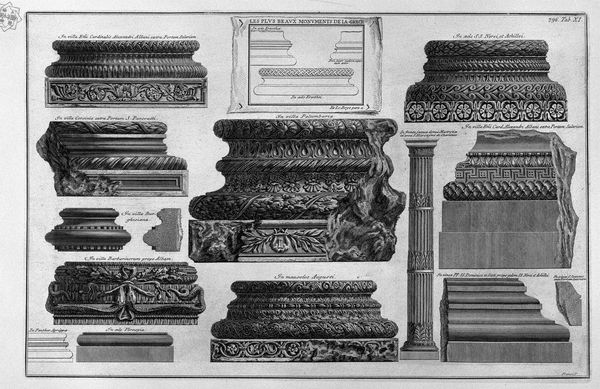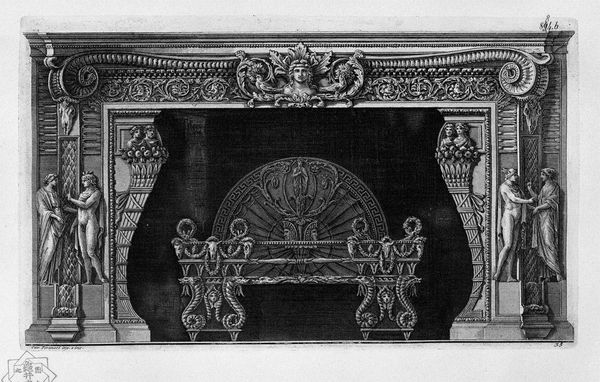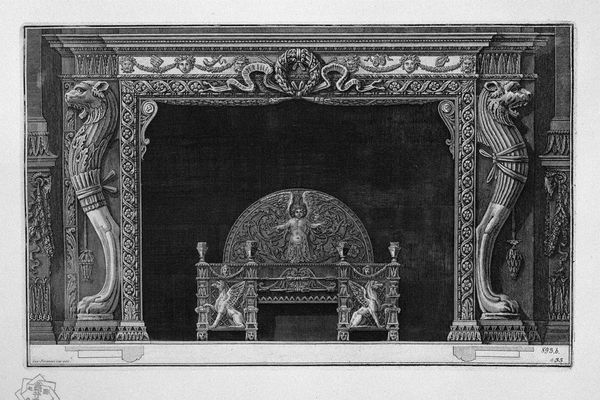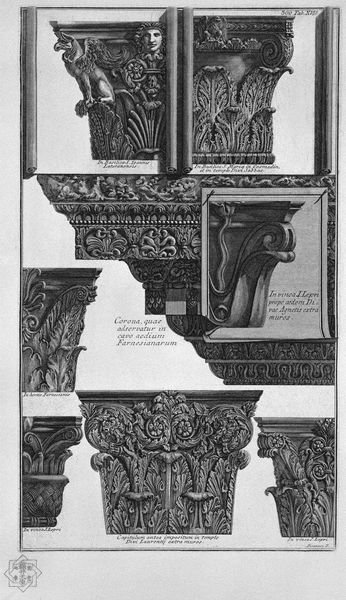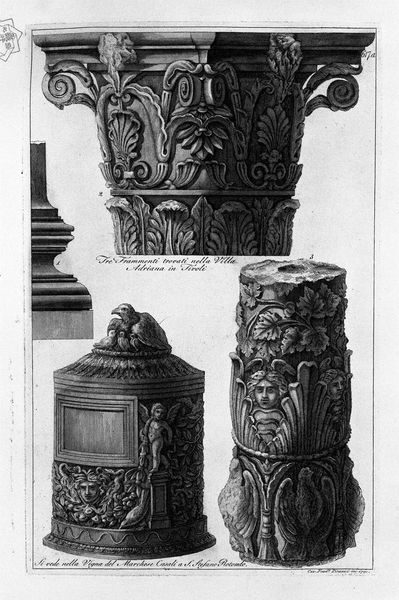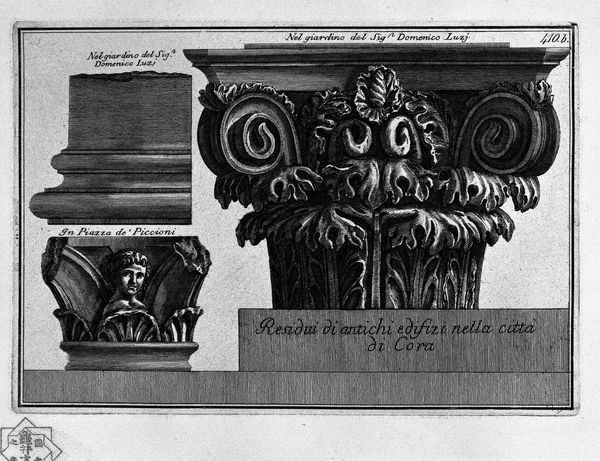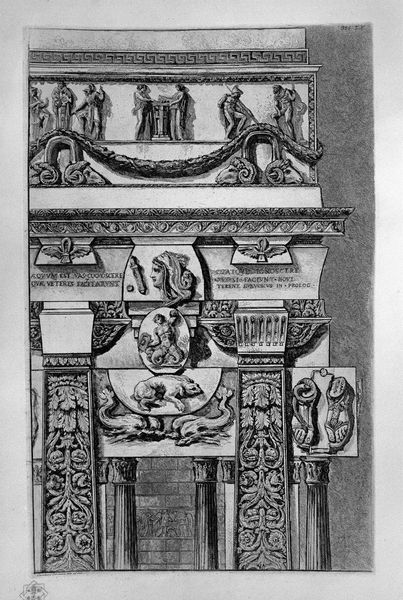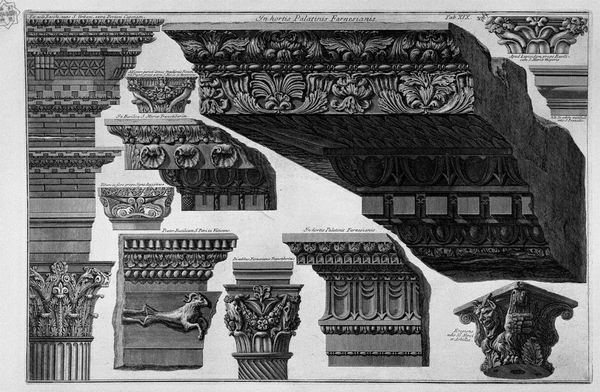
drawing, carving, sculpture, architecture
#
drawing
#
neoclacissism
#
carving
#
sculpture
#
form
#
geometric
#
ancient-mediterranean
#
column
#
sculpture
#
arch
#
line
#
architecture
#
monochrome
Copyright: Public domain
Giovanni Battista Piranesi made this print of shelves, capitals, and friezes in 18th-century Italy. Piranesi was more than just an artist; he was an archaeologist and a chronicler of Rome's architectural past. The image is full of meticulously detailed classical architectural elements. These components, derived from ancient Roman structures, experienced a revival during the neoclassical movement. Piranesi wasn't merely documenting these forms, but re-presenting them to his contemporaries. Italy at this time saw the rise of the Grand Tour, with wealthy Europeans traveling to absorb classical culture. Piranesi's prints catered to this market, offering visual souvenirs of their journey, while also fueling a broader interest in classical design. As historians, we consider Piranesi’s work as being shaped by the cultural and economic conditions of his time. By studying period publications, architectural treatises, and the history of the Grand Tour, we can better understand the complex interplay between art, commerce, and cultural identity in 18th-century Rome.
Comments
No comments
Be the first to comment and join the conversation on the ultimate creative platform.

